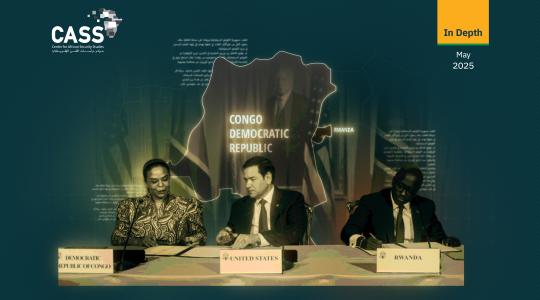Since early March, Somali’s Al-Shabaab Islamists have been working to strengthen their ranks by redrawing the borders of their de facto Islamic “states” or provinces (wilayat), delineating new administrative borders in the parts of southern Somali governorates they control.
Multiple reports suggest that Al-Shabaab is planning to create two governorates in each state where it has a widespread presence. It has already made administrative changes to “Juba Province”, the areas of the southern region of Jubaland that it dominates, dividing it into Lower Juba (which includes the districts of Kismayo and Afmadow) and Central Juba (which includes the districts of Kamsuuma, Jamaame, Badhaadhe and Xagar, large parts of which are controlled by Al-Shabaab).
Concurrently, the movement has appointed Sheikh Ahmed Abu Younis, a senior military figure, as governor for Lower Juba province, and Sharia judge Sheikh Ali Darwish as governor of Central Juba. It also dismissed judge Mohammed Abu Abdullah, who had been governor of the whole of Juba province before it was split in two, and has been a judge for Al-Shabaab for some 17 years.
The movement is expected to make similar administrative changes in the other areas it controls, and the new demarcations will apply to the its quasi-state organs—Bayt al-Mal (its finance ministry), the Zakat (tax) office, Sharia courts and Islamic schools. All these institutions will be administered according to the new wilayat and district boundaries. However, the movement’s central finance committee and security apparatus will stay as they are.
Why the change?
Before redrawing its administrative map, Al-Shabaab had consulted with senior tribal figures from the areas the movement controls, then organized a large meeting of influential figures from across its areas of control in Juba, including religious scholars, tribal sheikhs and businessmen, to inform them of the changes it had decided.
Al-Shabaab’s redrawing of the boundaries in the areas under its control reflects the movement’s keenness to promote several new leaders to its top ranks—notably, the aforementioned governors appointed to run the two “provinces” of Juba. This will allow the movement to beef up its consultative Shoura Council with more new members, who will represent important social and tribal constituencies in the areas under its control.
These administrative changes are expected to give the movement greater cohesion, helping centralize its decision-making and allowing it, when it is forced to withdraw from a certain region, to reproduce these institutions and address their shortcomings more rapidly.




